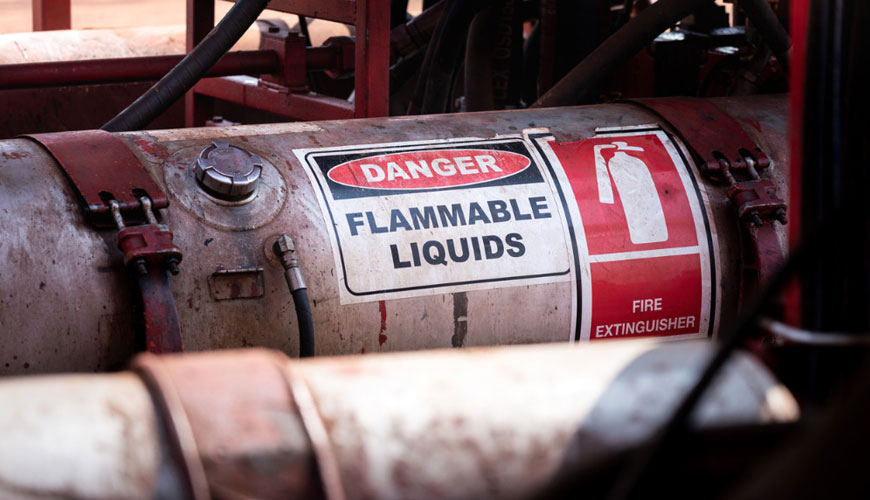

EUROLAB laboratory provides testing and compliance services within the scope of 16 CFR 1500.44 standard. The 16 CFR 1500.44 standard, a standard commonly referred to in flammability testing, the Federal Flammable Fabrics Act (FFA) regulates the production of highly flammable garments and is used in apparel textiles as well as children's pajamas, vinyl plastic film used in apparel, carpets, and rugs, and for mattresses and mattresses. It contains mandatory flammability standards and 16 CFR 1500.44 tests the extreme flammability of these materials.

Flammability is one of the potential hazards associated with consumer products. There are various regulations regarding this danger. The following regulations may apply to promotional items sold or distributed in the United States.
The FHSA defines a combustible solid as a solid that ignites and burns with a self-sustaining flame at a rate of greater than one-tenth of an inch per second along its major axis when tested by the method described in §1500.44. A highly flammable solid is defined as "solid that ignites and burns at an ambient temperature of 80ºF or less when subjected to friction, impact, or electric shock.
General use and adult products may also be tested in accordance with 16 CFR 1500.44. While not a mandatory requirement, this test identifies products that meet the definition of flammable solid. In determining whether a flammable solid is considered a hazardous substance, consideration should be given to whether the product poses a hazard in "reasonably foreseeable handling or use".
Under customary and reasonably foreseeable use, the product may come into contact with a source of ignition, be considered a hazardous substance and require a warning statement. It is not considered a hazardous material unless it is expected to come into contact with an ignition source. A warning statement can still be added but is not mandatory.
Granules, Powders and Pastes: The sample is placed in a flat, rectangular metal vat with interior dimensions 6 inches long × 1 inch wide × one quarter inch deep.
Rigid and Bendable Solids: The specimen is dimensioned and supported by metal ring stands, clamps, rings or other suitable devices as needed, with the principal axis oriented horizontally and maximum surface freely exposed to the atmosphere.
16 CFR 1500.44 Test Procedure
The prepared sample is placed in a draft-free area that can be ventilated and cleaned after each test. The temperature of the sample during testing should be between 68°F and 86°F. A burning paraffin wax of at least 5 inch in diameter is held so that the flame is in contact with the surface of the sample at the end of the major axis for 1 seconds or until the sample ignites, whichever is less. The candle is removed. The self-sustaining flame burning time is determined by a stopwatch. It should not exceed 60 seconds. The flame is extinguished with CO2 or a similar non-destructive type fire extinguisher. The dimensions of the burned area are measured and the burn rate along the major axis of the sample is calculated.
EUROLAB, with its more than 25 years of experience, state-of-the-art accredited laboratories and expert team, helps you get precise and fast results. Do not hesitate to contact our laboratory for your testing and certification requests.
To get an appointment, to get more detailed information or to request an evaluation, you can ask us to fill in our form and reach you.